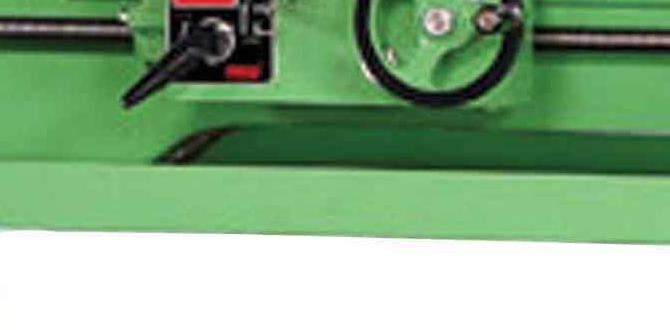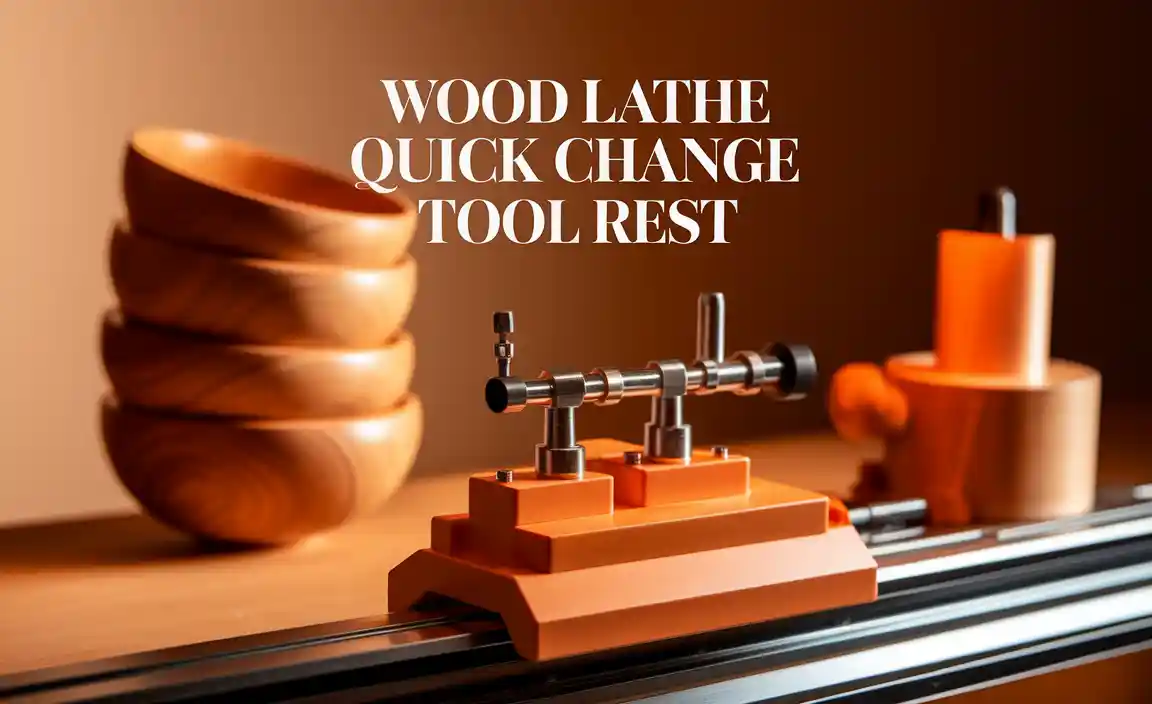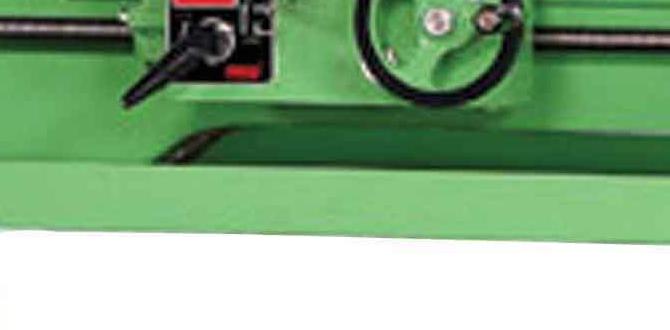Mastering Replication: Your Ultimate Wood Lathe Duplicator Attachment Review
Wood lathe duplicator attachment review – for any woodworker who has ever found themselves painstakingly trying to replicate curved or intricate shapes turned on a lathe, this phrase likely brings a mix of dread and hope. The desire to create identical pieces – be it for a set of chair legs, matching balusters for a staircase, or even a collection of decorative bowls – is a common one. However, achieving perfect uniformity with freehand turning can be a significant challenge, leading to frustration and wasted material. This is where the wood lathe duplicator attachment enters the picture, promising a solution to this age-old woodworking problem.
In this comprehensive review, we’ll delve into the world of wood lathe duplicator attachments, exploring their functionality, different types available, key features to consider, and ultimately, helping you determine which might be the best fit for your workshop needs. Whether you’re a seasoned professional or an ambitious hobbyist, understanding these tools can revolutionize your turning projects.
What Exactly is a Wood Lathe Duplicator Attachment?
At its core, a wood lathe duplicator attachment is a device that mounts to your existing wood lathe and allows you to trace a template pattern while simultaneously guiding your turning tool to replicate that pattern on a new piece of wood. Think of it as an automated tracing system for your lathe. The basic principle involves a stylus or tracer that follows the contours of a master pattern (often made from plywood, MDF, or even a pre-turned identical piece). As the stylus moves, a mechanism translates this movement to a cutting tool head, ensuring that the new workpiece is shaped to match the original.
The beauty of these attachments lies in their ability to eliminate guesswork and manual repetition. Instead of relying solely on visual cues and constant measurement, you’re guided by a physical template, allowing for consistent results across multiple identical parts.
Types of Wood Lathe Duplicator Attachments
The market offers several variations of wood lathe duplicator attachments, each with its own strengths and ideal use cases. Understanding these differences is crucial when evaluating your options:
Pivot/Swinging Arm Duplicators: These are common and often more affordable. They typically feature a swinging arm that holds the cutting tool. As the tracer arm follows the template, the cutting arm pivots in unison, mirroring the template’s shape onto the workpiece. These are generally good for simpler, more organic curves and shapes.
Sliding/Linear Duplicators: These designs employ a sliding mechanism, often on linear rails or ways, to achieve the replication. They can offer a higher degree of accuracy and are often better suited for replicating more geometric shapes or when very precise duplication is paramount. Some high-end models may even feature multiple axes of movement for complex profiles.
Self-Contained Units vs. Retrofits: Some duplicators come as complete units designed to integrate with specific lathe models. Others are more universal and can be adapted to a wider range of lathes with some modification. Retrofits can be a cost-effective way to gain duplication capabilities if an integrated unit for your lathe isn’t available or is too expensive.
Key Features to Look For in a Wood Lathe Duplicator Attachment Review
When you are evaluating different wood lathe duplicator attachment review options, several key features should be at the forefront of your decision-making process:
Accuracy and Repeatability: This is the most critical factor. How precisely does the duplicator replicate the template? Does it maintain that accuracy over multiple passes and for multiple pieces? Look for reviews that specifically mention the precision of the cutting action and the consistency of the results.
Ease of Setup and Use: A duplicator that is overly complex to set up or operate can negate its benefits. Consider how easy it is to attach to your lathe, align the template, and adjust for different workpiece sizes. Intuitive controls and clear instructions are a significant plus.
Template Material Compatibility: Can you make templates from readily available materials like plywood or MDF, or do you need specialized materials? The flexibility in template creation can impact both cost and convenience.
Tool Holding and Adjustment: The type of cutting tool the duplicator can accommodate and the ease with which you can adjust its depth or angle are important. Can it hold standard lathe chisels, or does it require specific tooling?
Build Quality and Durability: Like any workshop tool, a wood lathe duplicator should be built to last. Look for sturdy construction, quality materials (e.g., solid metal components, smooth-gliding bearings), and a design that minimizes vibration.
Benefits of Using a Wood Lathe Duplicator
The advantages of incorporating a wood lathe duplicator attachment into your workflow are numerous and can significantly enhance your woodworking experience:
Saves Time and Labor: The most obvious benefit is the reduction in time spent on repetitive tasks. Once a template is made, turning multiple identical parts becomes significantly faster.
Ensures Unwavering Consistency: For projects requiring multiple identical components, a duplicator eliminates the subtle variations that inevitably occur with freehand turning. This is invaluable for professional results.
Empowers Complex Designs: Duplicators can make turning intricately shaped components, which might be extremely difficult or impossible to replicate accurately by hand, achievable.
Reduces Material Waste: By minimizing errors and the need for multiple “test” pieces, a duplicator can help you conserve valuable timber.
Boosts Confidence and Productivity: Knowing you can achieve perfect replication can boost your confidence in tackling larger or more intricate projects. This, in turn, leads to increased productivity.
Considerations Before You Buy
While the allure of perfect replication is strong, there are a few things to consider before making your purchase:
Lathe Size and Power: Ensure the duplicator you choose is compatible with the swing and bed length of your lathe. A heavier duty duplicator might be overkill for a small hobby lathe, and vice versa.
Power Source: Most duplicators are purely mechanical, relying on your hand’s guidance. However, some advanced models might incorporate powered movement, which would require consideration of power sources.
Cost: Wood lathe duplicator attachments vary widely in price, from budget-friendly options to high-end professional models. Determine your budget and prioritize features accordingly.
* Your Typical Projects: If you primarily turn simple, symmetrical shapes, a duplicator might be less of a necessity than if you’re consistently creating matched sets of more complex forms.
Conclusion: Is a Wood Lathe Duplicator Right for You?
Ultimately, a wood lathe duplicator attachment review serves to highlight the considerable benefits these tools offer. For woodworkers who frequently need to produce identical turned components, a duplicator attachment is not just a convenience but often a necessity. It transforms repetitive tasks into a streamlined process, allowing for greater consistency, accuracy, and efficiency in your projects. By carefully considering the different types available, key features, and your specific workshop needs, you can find a wood lathe duplicator attachment that will become an indispensable asset, elevating your woodworking capabilities and bringing a new level of precision to your creations.




